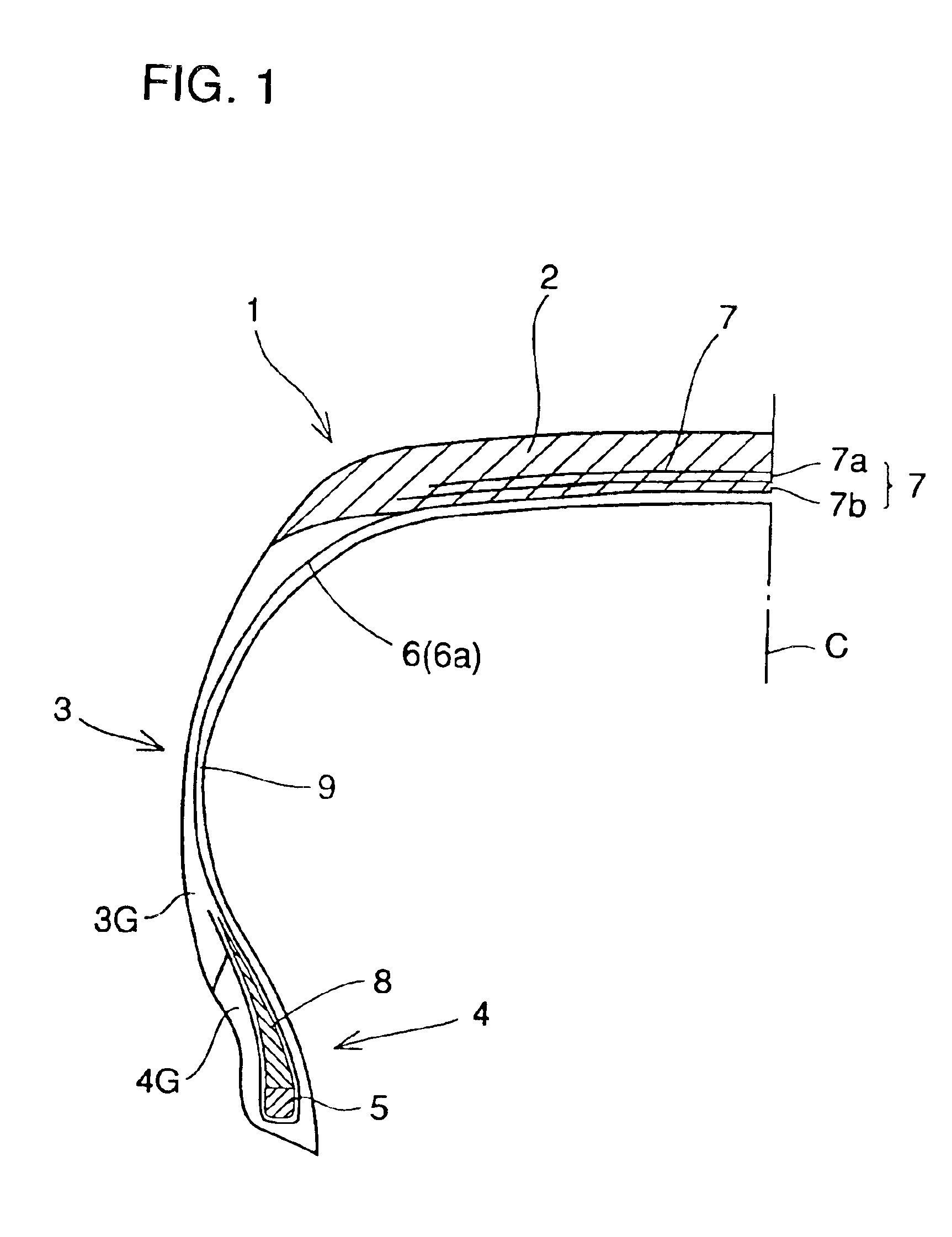Rubber composition for tire and pneumatic tire
a technology of pneumatic tires and rubber compositions, which is applied in the direction of special tyres, transportation and packaging, tyre parts, etc., can solve the problems of insufficient braking performance in the to-and-fro direction, the rubber composition cannot be made too soft, and the steering stability and abrasion resistance of tires employing such a softener deteriorate, so as to reduce the cost of manufacturing tires, improve cornering performance, and reduce the effect of paper recycling
- Summary
- Abstract
- Description
- Claims
- Application Information
AI Technical Summary
Benefits of technology
Problems solved by technology
Method used
Image
Examples
example 1
[0090]A rubber composition according to Example 1 had Shore A hardness of 61.3, elastic modulus E* of 4.50 (MPa), loss tangent (tan δ) of 0.122, M100 of 1.8 (MPa), M200 of 5.2 (MPa), M300 of 10.1 (MPa), and abrasion index of 96 relative to the value 100 of Comparative Example 1 discussed below.
example 2
[0091]The quantitative makeup of a rubber composition for tire was similar to that of Example 1 except that the amount of compounded old newspaper was 3 parts by weight. Additionally, the rubber composition was manufactured and tested by similar methods to those for Example 1.
[0092]The rubber composition according to Example 2 had Shore A hardness of 63.0, elastic modulus E* of 5.70 (MPa), loss tangent (tan δ) of 0.122, M100 of 2.3 (MPa), M200 of 5.6 (MPa), M300 of 10.4 (MPa), and abrasion index of 89 relative to the value 100 of Comparative Example 1 discussed below.
example 3
[0093]The quantitative makeup of a rubber composition for tire was similar to that of Example 1 except that the amount of compounded old newspaper was 6 parts by weight. The rubber composition was manufactured and tested by similar methods to those for Example 1.
[0094]The rubber composition according to Example 3 had Shore A hardness of 65.7, elastic modulus E* of 6.90 (MPa), loss tangent (tan δ) of 0.122, M100 of 2.7 (MPa), M200 of 6.0 (MPa), M300 of 11.0 (MPa), and abrasion index of 85 relative to the value 100 of Comparative Example 1 discussed below.
PUM
| Property | Measurement | Unit |
|---|---|---|
| specific surface area | aaaaa | aaaaa |
| width | aaaaa | aaaaa |
| specific surface area | aaaaa | aaaaa |
Abstract
Description
Claims
Application Information
 Login to View More
Login to View More - R&D
- Intellectual Property
- Life Sciences
- Materials
- Tech Scout
- Unparalleled Data Quality
- Higher Quality Content
- 60% Fewer Hallucinations
Browse by: Latest US Patents, China's latest patents, Technical Efficacy Thesaurus, Application Domain, Technology Topic, Popular Technical Reports.
© 2025 PatSnap. All rights reserved.Legal|Privacy policy|Modern Slavery Act Transparency Statement|Sitemap|About US| Contact US: help@patsnap.com

